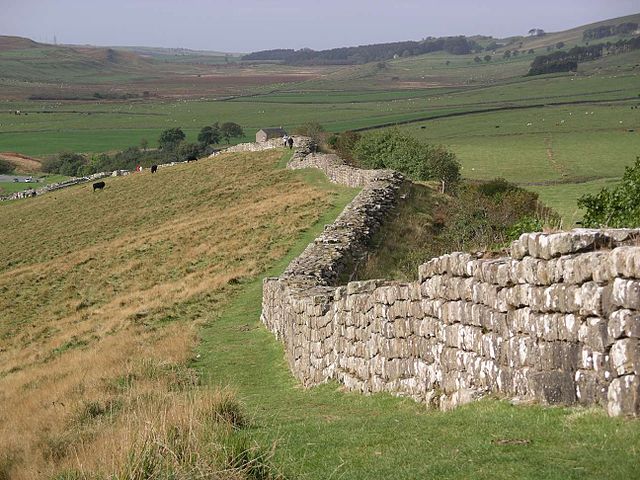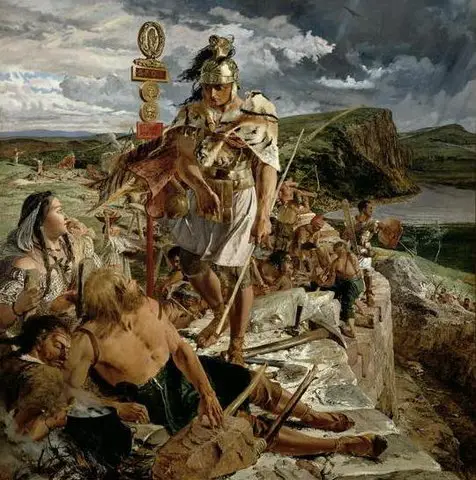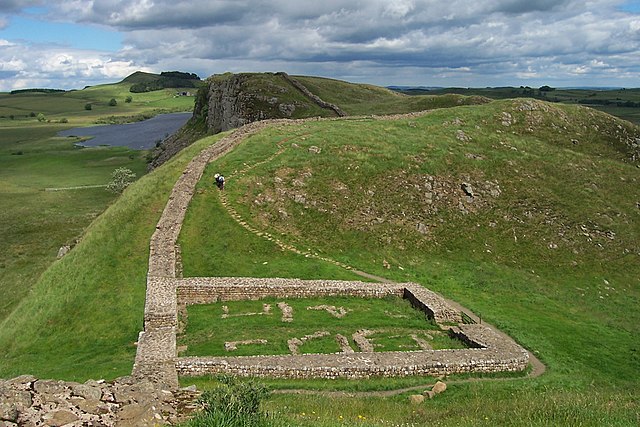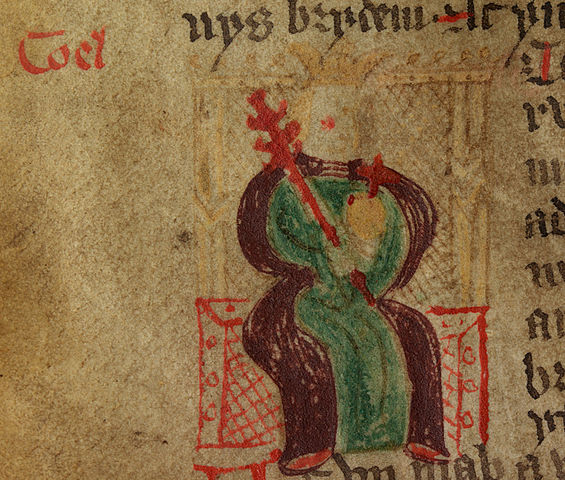
| Further Reading | Did The Roman Empire Really Fall? The Two Answers Explained |
Hidden in the northern English countryside stretches one of the most famous Roman wonders of engineering, Hadrian’s Wall. Stretching over 70 miles this wall was built by the Romans in 122 AD and was designed for two major purposes; to mark the northern boundary of the Empire and to prevent cattle thieves who routinely pillaged Roman land.
Generally speaking, Hadrians was extremely effective during the height of its use from about 122-142 AD. During this time period, primary sources detail that the wall itself was 12-15 feet tall and was used to prevent people from stealing cattle and fleeing north while also offering protection for the Romans living in England.
Here at The History Ace I pride myself on providing the internet’s best history articles. If at the end of this article you enjoyed it then think about subscribing to the free newsletter and sharing around the web; every share helps me help others fall in love with history and is much appreciated.
Without further ado, here is an entire article detailing just how effective Hadrian’s Wall was during its height.
When and Why Hadrian’s Wall Was Built

The Roman Empire started to look towards the British Isles in the Late Roman Republic when Julius Caesar crossed into modern England in 54 and 55 BC. However, after fighting several battles Caesar would return back to Rome to overthrow the Republic and leave the British Isles undefended.
However, Rome could not stay away from Britain forever and starting with Emperor Claudius in 43 AD the Empire started to send countless settlers and troops to build out a permanent Roman colony. This colony called Londinium still exits today and it is called London.
The reason why Rome invaded Britain was because of its mineral wealth. Silver, gold, and most importantly tin were all readily available in the British Isles. Tin was especially valuable to the Roman Empire because of its use in forging Iron tools and armor.
From Claudius in 43 AD up until Domitian in 81 AD the Roman Empire would push further and further north. Under Domitian, the Roman Empire would encounter several wars against the native Caledonia people who inhabited modern Scotland. Domitian’s reign marked the end of drastic expansion northward in Britain by Rome and from him up until Hadrian the Roman Empire consolidated its holdings in Britain.
Roman Emperor Hadrian came to power after Trajan. Trajan was a military general first and an Emperor second. During Trajan’s time, the borders of the Roman Empire expanded to their peak and the Empire became immensely wealthy. However, defending such large borders proved to be too much of a burden for the logistics and limited manpower of the Empire.
As such when Hadrian came to power his first focus was to control defense spending and consolidate the Roman borders. In most places, this meant pulling Roman-held land back to a natural boundary such as a river or mountain. However, in Britain there was no such boundary; Hadrian had the choice of either pulling out of Britain or building a boundary to draw the border at. This was the birth of Hadrian’s Wall.
When Was The Wall Built?
Generally speaking, Hadrian’s Wall began construction in 122 AD. The Wall was supposed to be constructed fairly fast but several setbacks caused the construction to be pushed back.
There have been several theories as to when Hadrian’s wall started construction and when it ended. Within the professional history community, several historians have pushed forward dates for the start of the construction that range from 117-122 AD.
What we know is that sometime between 117-122 AD Hadrian made it directly known to the Roman military that he wished to build a natural barrier in the northern region of Britain. This barrier would take the shape of a wall and be fortified with permanent garrisons of Roman troops.
The general rule of thumb is that construction began on Hadrian’s Wall around 122 AD. We know this because Hadrian himself visited the wall in 122 AD on a tour of the Roman province of Britain. Chances are the Roman garrison in Britain would have had a section of the wall done to show Hadrian during his visit.
What Was The Purpose of Hadrian’s Wall?
Hadrian’s Wall served three main purposes. First, the wall itself was designed not to prevent people from invading Roman Britain but rather to slow them down so much as to make it not worth the crossing. Second, Hadrian’s Wall served as a revenue generation source by collecting taxes from gates which allowed people to pass in and out of the wall at checkpoints. Third, Hadrian’s Wall was designed to demonstrate Roman power to anybody in northern Britain who had any intention of invading the province.
Simply put, Hadrian’s Wall served to slow people down from raiding Roman lands, impose power upon the people of Britain, and generate revenue from the inhabitants of Britain by collecting taxes.
So How Effective Was Hadrian’s Wall?

Remember, Hadrian’s Wall was created to fulfill three purposes; to collect taxes, demonstrate power, and prevent northern people from raiding Roman land.
So how effective was Hadrian’s Wall at accomplishing its three major goals? Well as it turns out it was pretty effective as for the remainder of the Empire Hadrian’s Wall continued to mark the northern boundary of the Empire (outside of a small 8-year period where the northern Antonine Wall was created/operated).
Regarding the collection of taxes, for a brief period of time goods from the outlying communities would have moved across the wall fairly easily through open gates. At these gate crossings, taxes would have been taken in kind as the people of the region had little Roman coinage. Here guards would have taken animals, pottery, food, and other things that would have been of use to them. These taxes would have been dispersed in the local economy and the effects of this would have slowly made their way back to the Roman capital of Londinium.
Hadrian’s Wall would have been a massively imposing thing to the locals. Standing between 12-15 feet tall this stone and wooden wall would have been a perfect display of Roman power. This imposing structure as far as the eye could see would have sent a clear message to the people of Britain that the Roman Empire was here to stay and that they would defend their province.
Finally, Hadrian’s Wall would have been the perfect wall at preventing people from raiding Roman land. Such a massive wall would have taken forever to cross and recrossing it with ample loot would have taken so long that most people would simply not do it.
Simply put, Hadrian’s Wall was extremely effective at its 3 main goals.
How Long Did Hadrian’s Wall Last?

Starting in the 4th century AD the Roman Empire was in a period of decline. From the outer borders, power started retracting to the capital. Sometime between the 4th and 5th centuries, Rome abandoned the province of Britania and with it Hadrian’s Wall.
However, the question remains when was the last time that Hadrian’s Wall was used as a defensive wall. Well, after Rome pulled out of the province sometime in the 4th century AD the local Romans continued to use the wall as a defensive barrier however over a period of 50 years even these last holdouts of Romans started to abandon the wall.
Sometime in the late 4th century AD Hadrian’s Wall was finally abandoned by the Roman people. This however was not the last time that the wall was used as a defensive position however. After the Roman people left the local Welsh started to move into and take over the land that the wall was located on.
The last time that Hadrian’s Wall was used was by a local 5th-century Welsh militia under the control of the legendary Welsh king Coel Hen. Under this king small portions of the wall were manned by militia who were tasked with defending Welsh land against people in the north and south.
As such, the last time that Hadrian’s Wall was used as an actual wall was in the 5th century AD. Almost 100 years after Rome had left Britain.
Conclusion
There you have it; everything you would ever want to know about how effective Hadrian’s Wall Was.
Most people are not aware of just how important this wall is to the history of Britain and Rome. Stretching 73 miles this wall is one of the most impressive feats of Roman engineering ever. The wall stood as the defacto northern border of the Roman Empire for over 300 years.
I hope you enjoyed this article. If you did then feel free to share around the web and subscribe to the free newsletter to remain up to date on all things history.
Further, you can check out some of the other articles below.
-
The Answer To How Effective Hadrian’s Wall Was

Just how effective was Hadrian’s Wall? Well here is everything you will ever need to know to answer that question and more.


